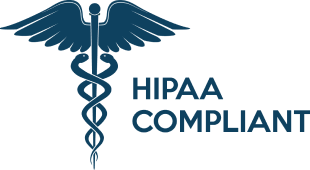The Rise of Virtual Nursing: Addressing Nurse Shortages and Improving Patient Care
The healthcare system is facing a critical challenge of increasing nursing shortages alongside aging populations, chronic diseases, and rising healthcare costs. However, amidst a wave of innovation and proliferating virtual care technologies, a new kind of healthcare approach is emerging to address these challenges: virtual nursing.
What is Virtual Nursing?
Virtual nursing refers to experienced nurses who use videoconferencing technology to provide patient care, monitoring, and support remotely. They support family members and alleviate the workload of bedside nurses by handling tasks that don’t require physical presence, such as conducting admissions interviews, delivering discharge instructions, remotely following up with patients, and providing essential patient education. Virtual nursing also enables nurses to use their expertise to train new graduates remotely and to improve care coordination between stakeholders.
The Rise of Virtual Nursing
Over the past year, there has been a 34% increase in virtual nursing programs across the U.S. Although this growth was initially driven by the COVID-19 pandemic, virtual nursing shows no signs of slowing down. Virtual nursing not only supports bedside nurses within healthcare facilities but also extends their reach to patients at home through remote monitoring tools that collect clinical data.
From remote admissions and discharges to proactive health monitoring, virtual nursing is poised to significantly impact healthcare professionals and the individuals they serve. This innovative model has demonstrated its potential to seamlessly integrate with and complement existing healthcare systems, proving that it is not just a temporary fix but a long-term solution.
Addressing Nurse Shortages and Reducing Labor Costs
The healthcare industry faces a significant challenge: nurse shortages exacerbated by the COVID-19 pandemic, the retirement of baby boomer nurses, a growing aging population, and a lack of nurse educators. According to the 2022 National Nursing Workforce Study, roughly 100,000 RNs have left the profession since 2021, and another 800,000 have reported the intent to leave by 2027, with roughly 20% of all working RNs planning to leave healthcare.
Virtual nursing is emerging as a solution that addresses these staffing challenges while enabling bedside nurses to devote more meaningful time to patient care. For starters, virtual nursing helps retain experienced nurses who are thinking of retiring or leaving the field. It also helps pass on their experience to new graduates whom they can accompany remotely. By leveraging digital platforms to handle administrative tasks and accompany recent graduates, bedside nurses can focus on providing hands-on, compassionate care, and recent graduates can enter the field faster and with more confidence.
Additionally, virtual nursing models offer financial benefits, potentially lowering labor costs and helping some rural hospitals remain operational, while leading to shorter hospital stays, fewer falls, and improved patient satisfaction.
Reducing Readmission Rates and In-Person Visits
Post-discharge care is crucial to reducing hospital readmission rates. However, due to staffing shortages, lack of direct communication with caregivers, and insufficient follow-ups, it often falls short. Virtual nursing offers an effective solution to these challenges:
- Improving Adherence to Discharge Protocols and Aftercare: Nurses can spend time educating patients remotely on aftercare and ensuring that patients are discharged properly. Moreover, by granting caregivers access to the same information as patients, virtual nursing helps ensure that those providing aftercare are well-informed and can have their questions answered promptly.
- Implementing Remote Discharge Follow Ups: Studies have shown that even simple post-discharge outreach by nurses significantly reduces readmission rates. Virtual nursing can be especially useful in this area, providing remote follow-ups that also reduce the infection risks carried by in-person visits. These remote follow-ups can be especially effective with post-operative patients that require wound assessments, medication reviews, and monitoring recovery progress.
Managing Chronic Diseases
Virtual nursing can play a pivotal role in chronic disease management, offering regular check-ins and support for elderly patients with conditions such as diabetes, hypertension, and heart disease. With technology like Binah.ai’s continuous health and wellness monitoring technology via the Polar Verity Sense™, nurses located remotely can receive alerts of patient falls with their geolocation or of health data abnormalities. This continuous oversight can help ensure that patients receive prompt assistance, adhere to their medication regimens, and detect any health issues as early as possible, resulting in fewer hospital visits and a better quality of life.
Promoting Equity in Healthcare
For patients who encounter barriers to accessing healthcare, such as transportation challenges, virtual nursing can play a crucial role in advancing equity by providing a virtual care coordinator. This is particularly beneficial in rural and underserved regions, where elderly individuals can consult with medical professionals without the need for extensive and costly travel. By conserving time and resources, remote nurses can promote healthcare parity, ensuring that all patients receive continuous and coordinated support as they transition between different care settings.
Enhancing Care Coordination
Virtual nursing fosters a comprehensive communication model that enhances collaboration among:
- Healthcare Providers: Remote nurses facilitate communication between doctors, specialists, and bedside nurses, ensuring a coordinated care plan.
- Patients: They receive ongoing care management, education, and emotional support from nurses, even in remote locations.
- Families: Caregivers are included in the communication loop, having their questions addressed and concerns alleviated by remote nurses.
Binah.ai: Supporting Virtual Nursing with Remote Monitoring Technology
At Binah.ai, we are committed to enhancing the capabilities of virtual nursing through our remote health and wellness monitoring technology. Our solutions enable healthcare payers and providers to remotely monitor a wide range of wellness indicators, including blood pressure, heart rate, oxygen saturation, stress levels, hemoglobin, HbA1c, tuberculosis and diabetes risk, smoker detection, and more, directly from camera and microphone-equipped devices including smartphones and laptops. Additionally, our continuous monitoring technology offers comprehensive health tracking and fall detection using the Polar Verity Sense™ optical heart rate sensor.
By integrating Binah.ai’s innovative technology into virtual nursing programs, healthcare payers and providers can bridge the gaps in virtual nursing and enable nurses to make smarter decisions using real-time health data.
For more information on how Binah.ai can support virtual nursing initiatives, schedule a live demo with us now.

 close
close





